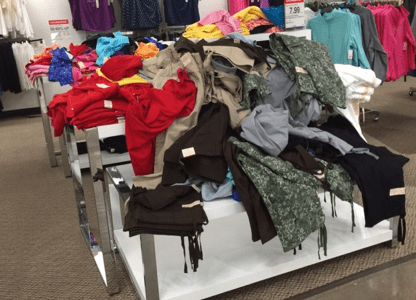B2B Mystery Shopping To Improve Your Business
A bit more complicated than typical mystery shopping, but definitely beneficial.
Traditional mystery shopping in the business-to-consumer (B2C) model is pretty straight-forward. Mystery shoppers are sent in to a business or retail location with specific tasks and questions to answer about their experience.
Business-to-business (B2B) mystery shopping works in the same manner, with the one exception being that customers, or mystery shoppers, will pose as companies or customers calling to inquire about your services and products.
B2B mystery shopping is one way you can make sure you stay focused on delivering great customer experiences every time and also allows your business to determine baselines and pinpoint areas for improvement. You can evaluate staff performance, review processes and procedures, and ensure your brand reputation is solid.
Understanding your customer’s journey in a B2B environment takes a little more creativity. Here are a few ideas on how to approach being a mystery shopper of your own B2B organization.
1. Evaluate the Call Process.
Find out what it’s like to call in as an actual customer and ask questions: What is it you do? What types of products/services do you offer? What happens if I have a problem/issue arise? What is your return policy? (if applicable)
It’s amazing how many inbound sales departments are totally unprepared for this line of questions. And you can experience what it feels like to be an actual customer.
This also gives insight into whether your employees are upselling/cross-selling other products or services offered by your company that may be important to the customer.
2. Use the web contact form to inquire about products or services.
Is the form easy to fill out? Does it cover the pertinent information? How quickly do you hear from someone? Is the form confirmation written in a robot voice? Lots of areas to consider here!
3. Ask typical questions of the sales person.
You probably know what questions get asked the most, so go ahead and ask them. Email the salesperson back and ask random questions. Ask what happens if you want to add a service in the middle of the contract. Ask about price. Ask the difficult questions salespeople hate and see what happens.
4. Sign up for the free product trial.
If a trial is typically offered, go for it. See what it’s like to sign up, use the product, call support and then either end the trial or not. Pay attention to how many emails and calls you get. Pay attention to if the product trial lives up to the marketing hype.
5. Ask other customers.
Check out forums or communities and ask about others’ experiences. Pay attention to what they say doesn’t work. Or call a few current customers and ask them. What’s working? What’s not? Tell me what can be improved and what works well.
The best way to get a truly outside-in perspective, however, is to ask someone from the outside to do it. You’ll get honest feedback and find holes in your process easy to ignore on the outside. But any form of mystery shopping is better than none. Take a step and examine what experience you’re really delivering to your business customers.

Furthermore, fictitious accounts and companies can be created to pose as current customers to evaluate the service ordering process. From here, you can see if your employees are attempting to upsell/cross sell, offering additional products/services that are important to your customers, and the general service levels provided.





